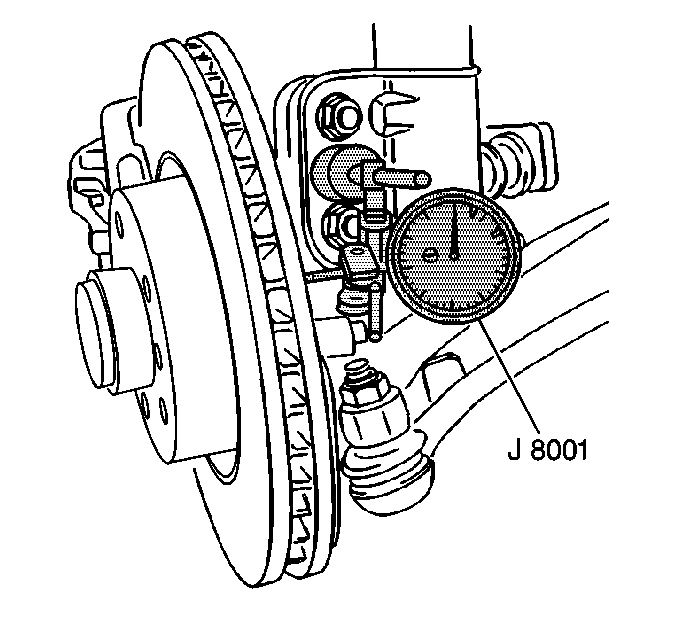Bearing/Hub Looseness and Lateral Runout
Step
| Action
| Value(s)
| Yes
| No
|
| |
1
|
- Raise and suitably support the vehicle. Refer to
Lifting and Jacking the Vehicle
in General Information.
- Mark the relationship of the wheel to the hub.
- Remove the tire and the wheel.
- If you are diagnosing a wheel bearing with a brake rotor, install
and fully seat the wheel nuts in order to retain the rotor to the hub and
bearing.
- Secure the J 8001
to
the knuckle on the opposite side of the brake caliper. Ensure that the J 8001
button contacts the rotor
surface about 13 mm (0.500 in) from the outer edge of the brake
rotor.
- Push the brake rotor inboard at the J 8001
and hold the brake rotor.
- Set the J 8001
to
zero.
- Pull the rotor away from the J 8001
. Observe and record the measurement on the J 8001
.
Does the measurement exceed the value shown?
| 0.1270 mm (0.005 in)
|
Go to Step 2
|
Go to Step
3
|
2
| Replace the wheel bearing/hub. Refer to the following procedures:
Is the repair complete?
| --
| System OK
| --
|
3
|
- Mark the relationship of the rotor to the hub (if applicable).
Notice: Whenever the brake rotor has been separated from the wheel bearing flange,
clean any rust or foreign material from the mating surface of the rotor and
flange with the J 42450 hub cleaning kit. Failure to do
this may result in increased lateral runout of the rotor and brake pulsation.
- Remove the brake rotor or the brake drum.
- Use the J 42450-A
in order to clean any rust or foreign material from the hub.
- Ensure that the J 8001
button contacts the VERTICAL surface of the hub as close as possible
to the hub outer edge.
- Set the J 8001
to
zero.
- Rotate the hub one complete revolution. Inspect the runout indicated
on the dial.
Does the runout indicated on the dial exceed the value shown?
| 0.040 mm (0.0015 in)
|
Go to Step 2
| System OK
|

